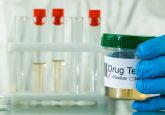HILIC UHPLC–MS/MS for fast and sensitive bioanalysis: accounting for matrix effects in method development

Background: Matrix effects are considered to be a main obstacle of quantitative bioanalytical LC–MS/MS methods. Therefore it is often required to minimize them in order to increase method reliability. HILIC has been referenced as one of possible approaches. However, there is a lack of experimental evidence in scientific literature so far. Methodology: Matrix effects were evaluated using spiked serum samples after SPE and protein precipitation prior to UHPLC–ESI-MS/MS. Chromatography was performed in both HILIC and reversed-phase mode. The influence of the matrix effects on the signal response was assessed using a set of 34 compounds of pharmaceutical interest and post-extraction addition approach. Results: The advantages and drawbacks of the HILIC and reversed-phase chromatographic modes were compared and discussed in detail. Conclusion: HILIC demonstrated the potential to reduce the occurrence of matrix effects when a more thorough sample pretreatment procedure such as SPE was applied.
LC–MS/MS is the method of choice for quantitative analysis of compounds in biological matrices [1–4]. However, co-eluting matrix components, which are not observed in the SRM chromatogram, can have a detrimental effect on the quantitative results, since they can interfere with the ionization process and cause suppression or enhancement of the analyte response [1–6]. This phenomenon is called matrix effects (ME) [7]. Typical interfering compounds from biological samples include phospholipids and various salts [8,9]. The efficiency and reproducibility of the ionization process could be affected by the ME, which may result in the loss of method selectivity, sensitivity and accuracy [9]. Therefore, ME are considered to be a main obstacle of quantitative LC–MS/MS methods [2]. Implicitly, it is of high importance to evaluate ME during the development of quantitative bioanalytical LC–MS/MS methods and to minimize their impact.
Click here for the full article.






